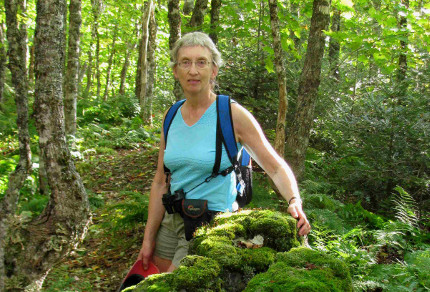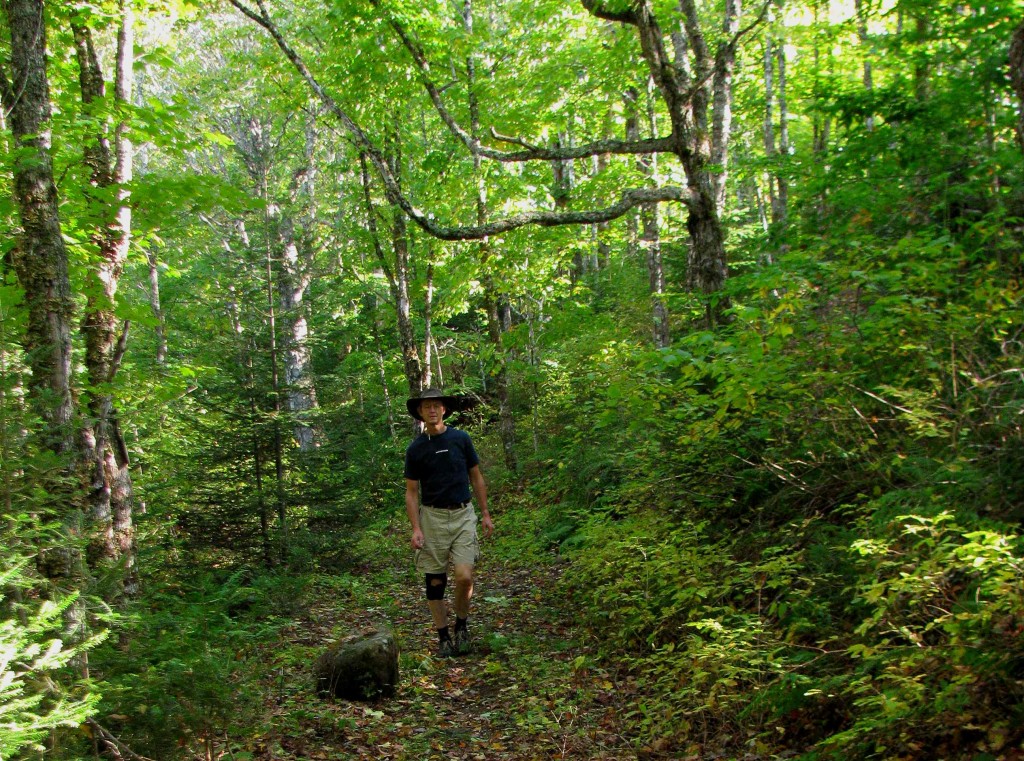
Vilis Hiking in Gully Lake Wilderness Area, Nova Scotia (© Magi Nams)
Like royalty with the world at our feet, Vilis and I hiked for two hours through Nova Scotian hardwood forest this afternoon. We climbed hills, walked ridges, slopped through a meadow flooded as a result of last week’s torrential rains, and waded or hopped stones across streams. Maples with leaves uncharacteristically green for this time of year soared over us, the late ‘turning of the colour’ no doubt due to our warm autumn (this is discounting those two fiercely chilly and shockingly snowy/slushy days last week).
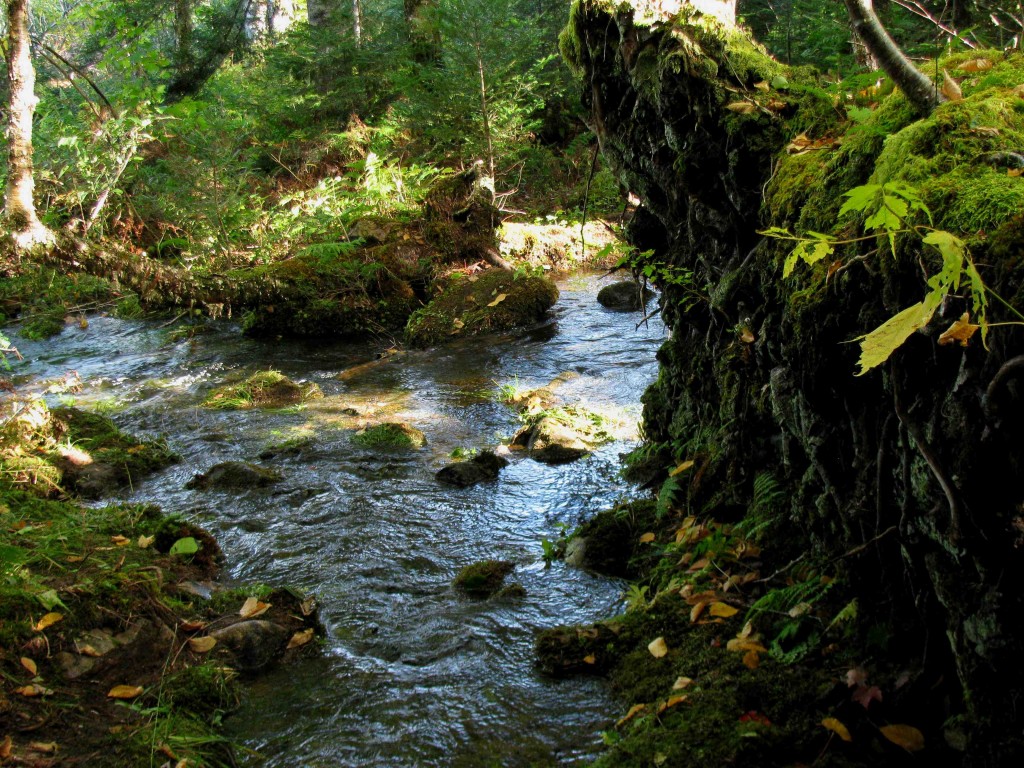
Stream Crossing on Gully Lake Wilderness Area Trail (© Magi Nams)
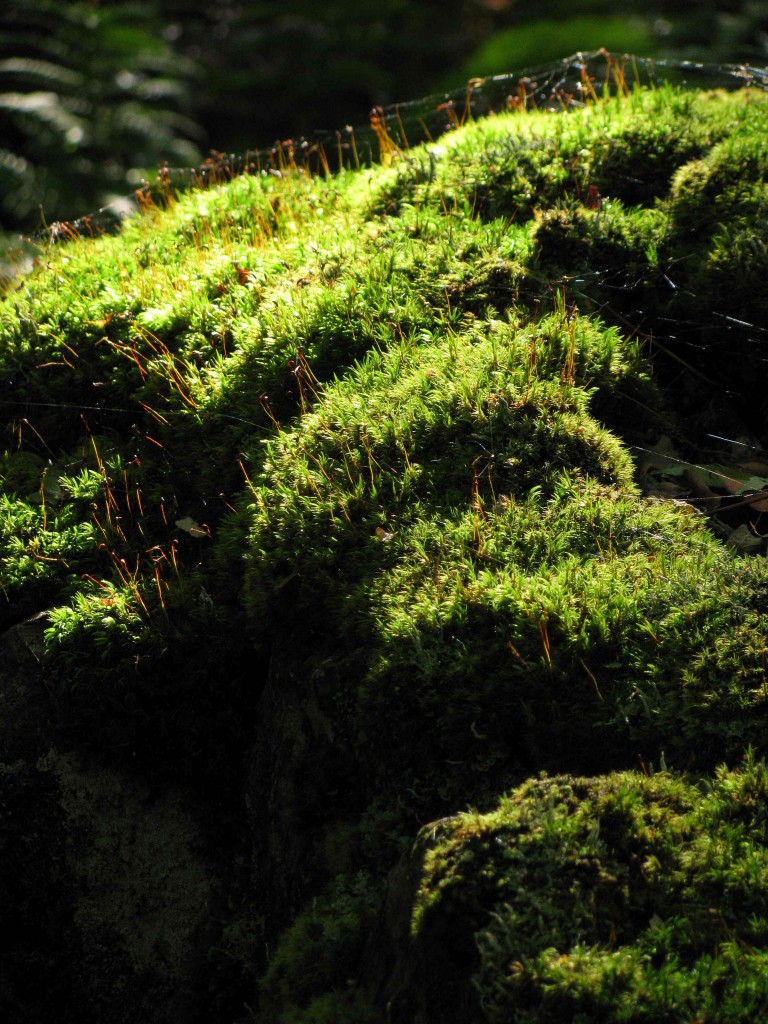
Mosses with Spider Web on Spore Capsules, Gully Lake Wilderness Area (© Magi Nams)
Family groups of robins and blue jays called out and departed trees at our approach, ruffed grouse erupted into whirring flight through dense understory cover, red squirrels chattered somewhere in the hardwood canopy, and an eastern chipmunk chittered and rustled through fallen leaves, diving for cover when we walked past. We found spider web entangled around the spore capsules of mosses growing atop a split boulder no doubt left as an erratic by some past glacier. (The ridges we hiked along were also likely the topographical legacy of glaciation.) Recalling our hikes in the Port Hills near Christchurch, New Zealand, where we and our then young sons encountered rest stops titled Sign of the Kiwi, Sign of the Bellbird, and Sign of the Packhorse, I bestowed the name ‘Sign of the Cleft Rock’ on the prominent trail feature.
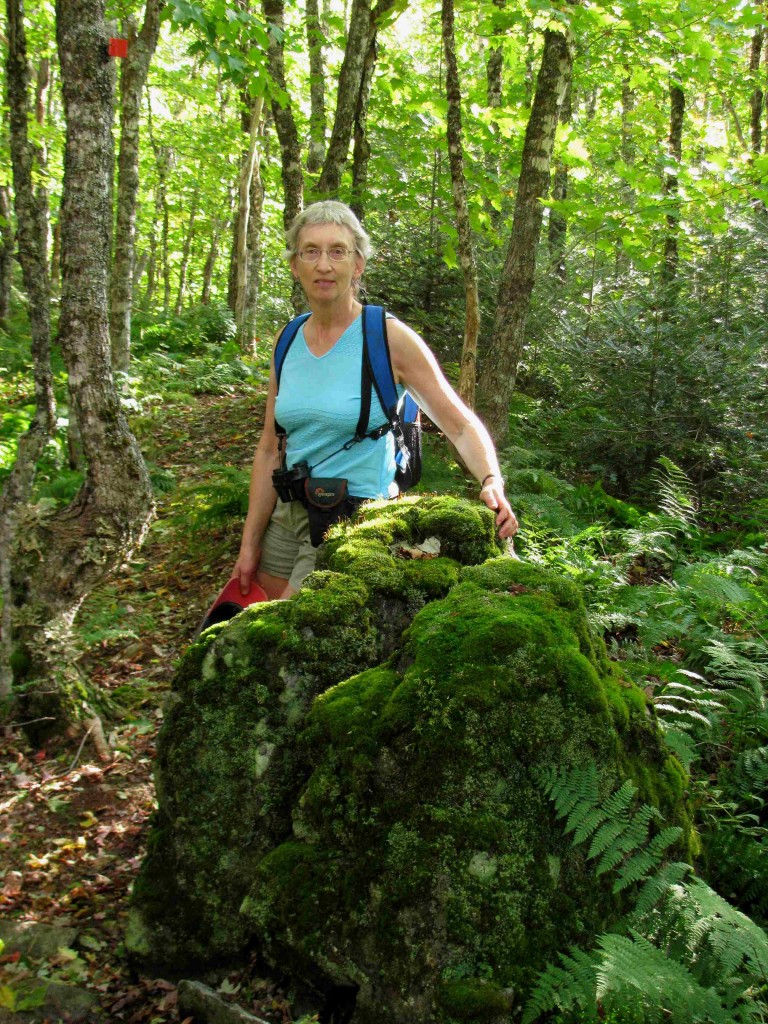
Here I am at the ‘Sign of the Cleft Rock’, Gully Lake Wilderness Area (© Vilis Nams)
Limited in time by a planned barbecue, we retraced our steps through what had likely been part of the haunt of Willard Kitchener MacDonald, the legendary ‘Hermit of Gully Lake.’ Having skipped off a troop train in the 1940’s to evade military duty in World War II for religious reasons, MacDonald, who was born in Massachusetts but grew up in Nova Scotia, hid himself away in this neck of the woods for six decades, periodically receiving visits from friends at his hut (and later a cabin, after a forest fire destroyed his dwelling)1 or appearing in the village of Earltown a few kilometres away for supplies. When he didn’t reappear in the spring of 2004, the search for the hermit was on. (I remember the news coverage of the search). Hundreds of volunteers combed the woods for him, and his bones were found in June of that year.1 He’d lived off the land for sixty years and, in a trailer for the documentary film Willard: The Hermit of Gully Lake, had stated that he believed in miracles.2 His survival as a recluse in this beautiful wilderness was one of those miracles.
Reference:
1. Wikipedia. Willard Kitchener MacDonald. Updated 9-Sep-2011. Accessed 11-Oct-2011. http://en.wikipedia.org/wiki/Willard_Kitchener_MacDonald
2. Push back Productions. WILLARD – The Hermit of Gully Lake. Accessed 11-Oct-2011. http://video.google.com/videoplay?docid=-6993127768428359932

